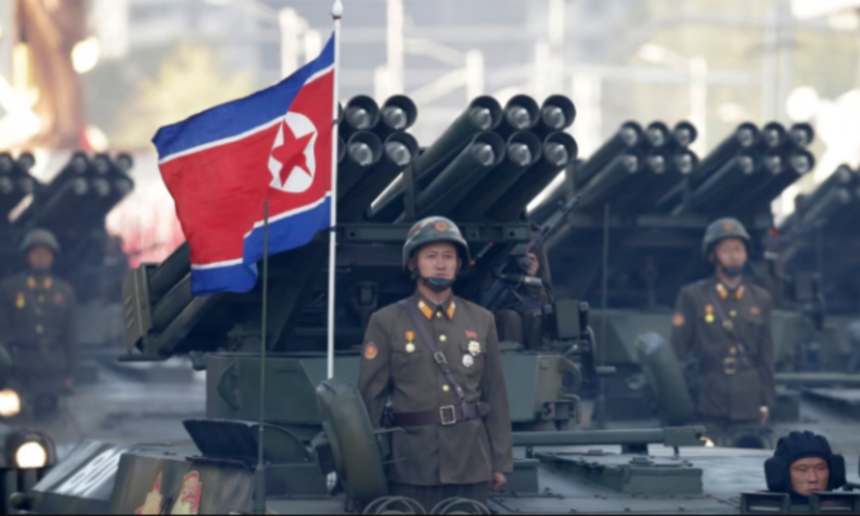If the elite troops of North Korea expected an easy campaign against Ukrainian forces in Russia’s Kursk region, they have been faced with a harsh reality on the ground.
Nearly 1,100 North Korean special forces have been killed or injured in Russia since clashes with Ukraine began several weeks ago, reported South Korea’s National Intelligence Service on December 19. A general is said to be among the casualties.
Ukrainian President Volodymyr Zelensky stated on December 23 that the actual number could be much higher—over 3,000, or a quarter of the North Korean special forces sent to Russia—although the Ukrainian leader noted that these figures are preliminary. Radio Free Europe has been unable to confirm any of the reported numbers.
North Korean leader Kim Jong-un, however, does not appear to be concerned by these losses. The authoritarian leader is reportedly increasing his support for Russian President Vladimir Putin in exchange for critical supplies of oil, cash, and military technology.
Zelensky stated on December 23 that North Korea may send more troops and weapons to the front. The South Korean General Staff supported this prediction, stating that Pyongyang is preparing to rotate soldiers or supply Russia with additional troops.
North Korea’s military support comes at a critical time in the war. Russia is attempting to defeat Ukraine’s infantry, which has fewer soldiers and resources, and capture territory before its manpower and resources are depleted.
Russia has lost over 600,000 soldiers during nearly three years of fighting, according to the Pentagon in October. Moscow has exhausted much of its military material and is struggling to replace artillery and rockets due to Western sanctions.
Currently, nearly two-thirds of the mortars and shells Russia fires at Ukraine come from North Korea, according to a report by the Wall Street Journal, citing Ukrainian officer Andriy Kovalenko. And one-third of the ballistic missiles fired at Ukraine are produced in North Korea, according to Ukrainian officials.
Pyongyang is increasing arms production to meet Russia’s growing demand, experts said.
Trench Warfare
Russian troops are now gaining ground in eastern Ukraine at a faster pace than at any time since the war began. Kyiv carried out a surprise incursion into the Kursk region in August, seizing parts of Russian territory in the hope of drawing enemy forces away from eastern Ukraine. This has not yet happened, partly due to the troop reinforcements from North Korea.
The arrival of North Korean troops in Russia in October was initially seen as a desperate move by Putin, who had been forced to significantly raise wages to attract new recruits.
However, The New York Times reported on December 23, citing American officials, that it was North Korea that offered Russia the troops, and Putin accepted the proposal. It remains unclear when Kim made this offer.
Putin traveled to Pyongyang and met with Kim in June. During the summit, the two leaders agreed on a strategic treaty, which includes mutual defense. Putin signed the treaty into law in November.
The troop supply for Russia may help Kim avoid sanctions on military technology and materials. North Korea has been hit by international sanctions since conducting its first nuclear test in 2006.
North Korea has not been involved in active combat for decades. As a result, its military—over 1 million strong—lacks combat experience. The deployment in Ukraine serves as a way for Kim and his army to gain this experience.
However, Kim’s troops are not well-prepared for trench warfare, which involves extensive use of drones and missiles, the type of fighting they are facing in Ukraine, experts say.
Hyunseung Lee, a North Korean citizen who was part of a reconnaissance battalion for three and a half years in the 2000s before deserting, told Radio Free Europe last month that North Korean troops “are not trained with these devices.”
He said that they cannot quickly learn to operate drones and high-tech equipment in such a short time.
Videos circulating on social media show Ukrainian kamikaze drones hitting and killing North Korean soldiers in snow-covered fields in Kursk.
Commenting on these videos on December 19, Lee wrote on X (formerly Twitter) that these scenes were a “tragic and predictable result.”
Modern military technology is not the only factor contributing to the widespread deaths of North Korean soldiers, according to the Institute for the Study of War. This Washington-based think tank said that North Korean troops are facing difficulties in communicating and coordinating with Russian forces due to language barriers.
Perhaps most importantly, North Koreans are now conducting initial attacks in open terrain against Ukrainian positions, said the Institute for the Study of War. Some military experts call this “cannon fodder” tactics, as it leads to significant loss of life among the soldiers involved in these operations.
Yevgen Yerin, a spokesperson for Ukraine’s military intelligence service, told AFP on December 24 that the use of North Korean troops by Russia has not had a significant impact on the battlefield.
“It’s not a huge number of personnel,” he said, adding that they are using tactics that are “primitive, more akin to World War II.” /REL/







